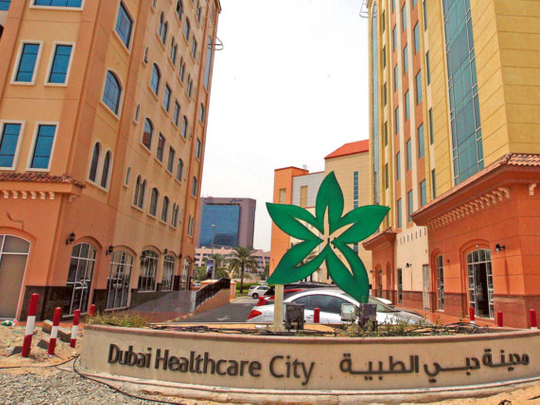
With returns from traditional real estate assets declining, investors and other real estate stakeholders are spreading their wings and exploring opportunities across a range of “alternative assets”. The largest two alternative sectors to date have been education and healthcare, where governments across the region have sought to increase the involvement of the private sector in response to lower levels of government revenue in the era of lower oil prices.
The education and healthcare sectors share a number of common characteristics that make them attractive to potential real estate investors, developers and contractors. These include a growing demand, a current shortage of supply as well as strong government support to improve the social infrastructure and, therefore, the economic competitiveness of the region.
JLL has recently released a report called Healthy Returns, highlighting the opportunities for investors and other real estate players in the healthcare market across Mena (Middle East and North Africa) over the next five years as the region responds to an ageing population and increased demand for hospital beds and other healthcare facilities.
With the current shortage of hospitals, clinics and other healthcare facilities, an ageing population and the rise of medical tourism, there is a pressing need for additional healthcare facilities in the region over the coming years. To merely keep pace with the forecast population growth will require around 10,000 additional beds which is equivalent to around 70 new hospitals in the 5 major cities across the region (Dubai, Abu Dhabi, Riyadh, Jeddah and Cairo. Given the current constraints on government spending, the ambitious plans to improve healthcare provision in the region will depend upon attracting greater private sector investment.
One of the major demand drivers is the ageing population across the region. While Mena has a relatively young age profile, the number of people aged over 65 years is forecast to increase by 4.4 oper cent per annum over the next five years, more than twice the increase in the overall population (1.9 per cent per annum). As a result, the number of people over 65 years will increase from 21 million to 26 million by 2020.
Spending on healthcare in the region is currently below well below global best practice. Mena has just 1.9 beds per 1,000 population in comparison to the OECD (Organisation for Economic Co-operation and Development) average of 4.8 beds. Governments across the region have recognised the need to increase the level of healthcare provision and there is therefore strong government support for creating more hospitals and other medical facilities. To achieve the same provision of hospital beds as current available across OECD countries would require a staggering 470,000 additional beds, which equates to 3,130 new hospitals to be developed in the 5 cities covered by JLL by 2022.
Another factor driving demand for healthcare facilities is the growth of medical tourism. Governments across the region are seeking to reverse the outflow of patients seeking medical treatment elsewhere, with up to 30,000 UAE citizens currently travelling overseas for medical treatments each year. The Dubai Health Authority and other agencies are actively seeking to reverse this trend and attract 500,000 medical tourists by 2020.
One tool likely to be increasingly widely used in the healthcare sector are Public Private Partnerships (PPPs), which shifts the financial burden of project funding from the public to the private sector, relieving pressure on government spending and freeing up resources to spend on other priority projects. The UAE has a reputation as an investor friendly environment. The reputation extends to the healthcare sector, with a number of major international hospitals already operating in the UAE including the Cleveland Clinic in Abu Dhabi and the Moorefield’s Eye Hospital in Dubai.
While hospitals are extremely specialist real estate assets and are not likely to appeal to all real estate investors, clinics and other less specialist medical facilities can be successfully incorporated into more generic forms of real estate such as office buildings and retail malls. This trend is already being seen, with the healthcare sector accounting for a significant amount of take up in the office and retail markets across the region. Developers of large master planned communities are also recognising the benefit of incorporating clinics in their developments.
There are of course challenges that will need to be overcome. There is the shortage of qualified local medical staff, which will require more expatriates to be attracted to the region, which flies in the face of policies to increase the participation of local citizens. For the region to become the envisioned international healthcare hub will require a long term commitment to educating and training of local citizens.
Despite these constraints, the strong demand and current shortage of hospitals, clinics and other healthcare facilities, makes this one of the most attractive sectors of the Mena real estate market for investors.











